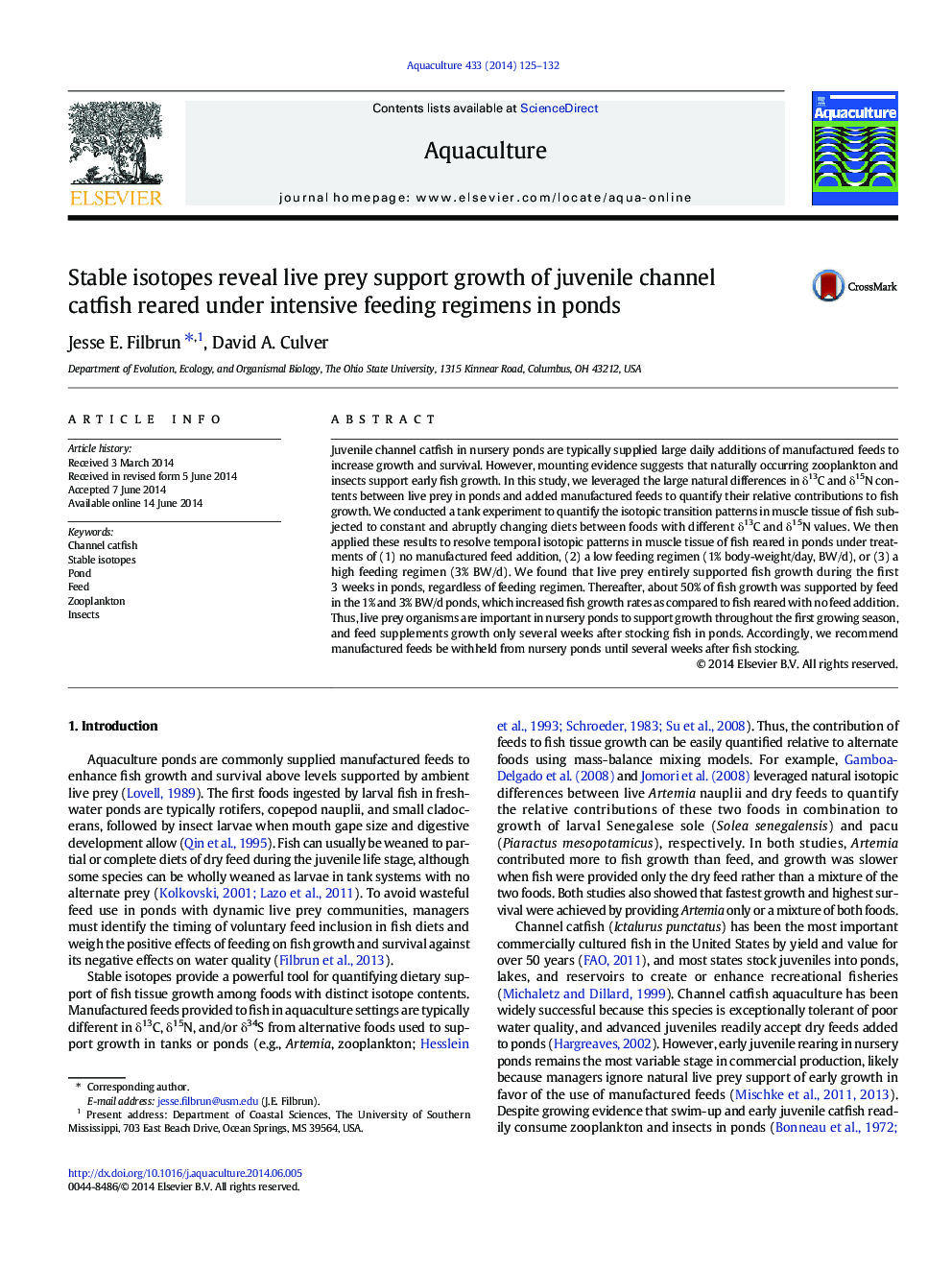| Article ID | Journal | Published Year | Pages | File Type |
|---|---|---|---|---|
| 2421878 | Aquaculture | 2014 | 8 Pages |
•We quantified fish diets using the δ13C and δ15N contents of live prey and feed.•Live prey supported fish growth in ponds, regardless of feeding rate.•Dry feeds supplemented fish growth only several weeks after stocking ponds.•Managers should withhold feed from ponds until its earliest use by fish.
Juvenile channel catfish in nursery ponds are typically supplied large daily additions of manufactured feeds to increase growth and survival. However, mounting evidence suggests that naturally occurring zooplankton and insects support early fish growth. In this study, we leveraged the large natural differences in δ13C and δ15N contents between live prey in ponds and added manufactured feeds to quantify their relative contributions to fish growth. We conducted a tank experiment to quantify the isotopic transition patterns in muscle tissue of fish subjected to constant and abruptly changing diets between foods with different δ13C and δ15N values. We then applied these results to resolve temporal isotopic patterns in muscle tissue of fish reared in ponds under treatments of (1) no manufactured feed addition, (2) a low feeding regimen (1% body-weight/day, BW/d), or (3) a high feeding regimen (3% BW/d). We found that live prey entirely supported fish growth during the first 3 weeks in ponds, regardless of feeding regimen. Thereafter, about 50% of fish growth was supported by feed in the 1% and 3% BW/d ponds, which increased fish growth rates as compared to fish reared with no feed addition. Thus, live prey organisms are important in nursery ponds to support growth throughout the first growing season, and feed supplements growth only several weeks after stocking fish in ponds. Accordingly, we recommend manufactured feeds be withheld from nursery ponds until several weeks after fish stocking.
